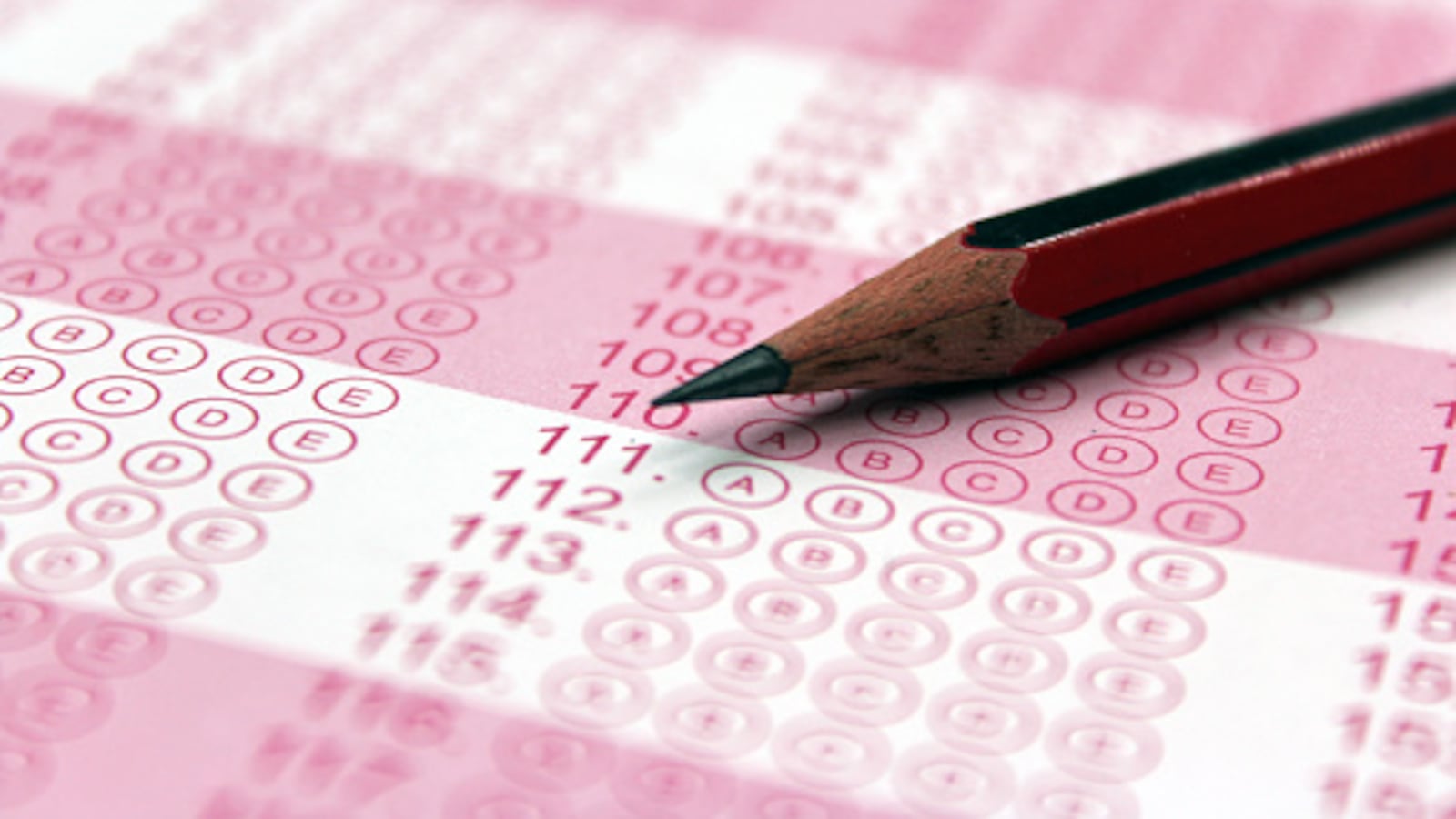New York City students continued to significantly outperform their peers in other big cities in the state on average, according to scores released Wednesday — news that anxious parents are receiving weeks later than usual.
While the city’s proficiency rate in English edged out the state average, city students lagged behind those statewide in math. Overall, the scores show a jump for the city from the previous year, but the rise can’t necessarily be attributed to greater achievement, as changes in the test format make such year-over-year comparisons hard to gauge.
The latest results show that 46.7 percent of city students were proficient in English and 42.7 percent were proficient in math on tests given to students in grades 3 through 8. That’s compared to 45.2 percent and 44.5 percent, respectively, statewide.
Still, gaping disparities remain between the city’s white students and their disadvantaged peers. In English, 34 percent of black students were proficient, and in math 25.5 were. Almost 10 percent of students who are learning English as a new language passed reading exams and 18 percent passed math exams. By contrast, white students had a 66.5 percent pass rate in English and 63.6 pass rate in math.
Overall, scores continued an ostensible upward climb for city students: Pass rates increased by 6 percentage points in English and almost 5 percentage points in math.
But the uptick comes with a big caveat from education officials and testing experts who cautioned against making year-over-year comparisons. “No matter how hard the temptation, you cannot do it,” said MaryEllen Elia, state commissioner of education.
The problem, analysts say, is that this year’s test was significantly altered compared to last year’s. The usual three-day window was condensed into just two days of testing.
“That does not mean this year’s scores aren’t meaningful — they are,” Elia said.
Critics and champions of the city administration often seize on the scores to claim education policies are moving in the right direction — or need a revamp. Even as state officials warned that the results weren’t “apples-to-apples,” Mayor Bill de Blasio released a statement Wednesday saying: “We now have a school system that is steadily improving before our eyes. We’ve seen steady gains across our students’ state math and English exams, proving that equity and excellence go hand in hand. I salute our students on their progress.”
At a press conference later in the afternoon, the mayor tempered his tone significantly, saying the scores represent a “reset” moment on which to base future progress. (He chalked up his comments in the press release to “a little over-exuberance among the writers,” though the quote was attributed to him.)
The results “now give us a baseline to work from in the years ahead. We have a new chancellor and a new leadership team at the DOE,” de Blasio said at P.S. 204 The Morris Heights School in the Bronx.
The exams are often seen as high-stakes and shape perceptions of education policy and even individual schools. How much weight they’ll have going forward remains uncertain, as a portion of a law that would tie test scores to teacher evaluations is currently on hold in New York, and the state is moving toward using other metrics to judge school performance under the Every Student Succeeds Act, which was passed by Congress in 2015.
For Carranza, the scores represent both a political opportunity and challenge. The tests will remain the same for the next two years, allowing the kind of year-to-year analysis not possible this time, and he will likely be judged on future outcomes. Since arriving in April, he has shuffled the school system bureaucracy in an attempt to support schools and principals better and hired a chief academic officer to focus on what happens in the classroom.
“These scores are indicative of the sustained progress we have made in classrooms, schools and districts across all five boroughs,” Carranza said in a statement. “We have much more work to do to close opportunity gaps, and we will continue our push to deliver the equitable and excellent education that every New York City public school student deserves.”
State officials blamed the change in test format for delaying the release of the scores, which are nervously anticipated by families seeking to apply to competitive middle schools and high schools in New York City. Many of its most selective schools consider test scores in admissions decisions, and knowing the results can help students realistically weigh their options.
The state moved to a shorter testing window — and dialed down the potential penalties to schools — to soothe the concerns of parents, students, and educators who worry about the impact of standardized tests. It seems the change wasn’t enough to win over many more test-takers, as the number of students refusing the exams across the state stayed about the same. This year, 18 percent opted-out, one percentage point lower than last year. Although a far smaller percentage of New York City students have opted out of the exams in the past, the proportion that chose to skip either the English or math exam this year inched up from 4 percent to 4.4 percent.
State officials said the “vast majority” of students who refused tests came from average or low-need school districts.
“It’s encouraging to see that test refusals are continuing to decline,” Elia said about the statewide results.
Charter schools statewide and in New York City outperformed traditional public schools on the exams. In English, 57.3 percent of city charter school students showed proficiency, while 59.6 percent did in math.
We will bring you more news and analysis as we crunch the latest numbers. Stay tuned for updates, and email us any questions you’d like us to answer in our reporting: ny.tips@chalkbeat.org

